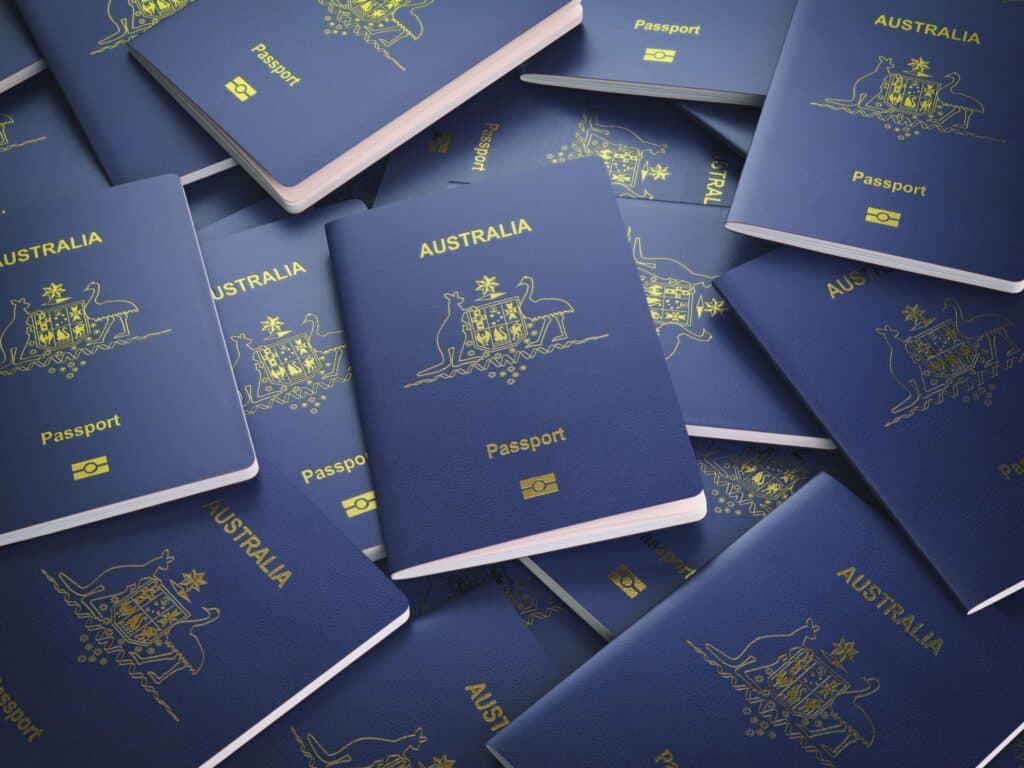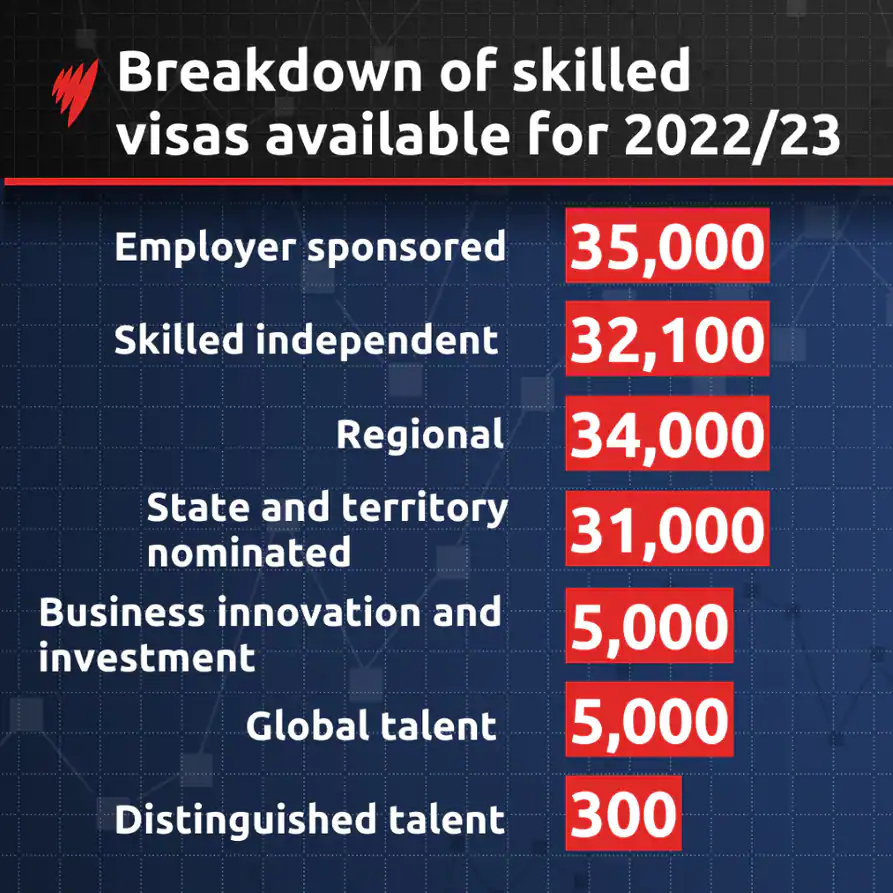
This year, a new government made a number of adjustments to Australia’s immigration procedures. Here is a schedule of events leading up to 2023.
Since taking power in May, the new administration led by Labor’s Anthony Albanese has already significantly changed Australia’s immigration laws and started to tackle the visa backlog.
The government has promised to review the usefulness of skilled migration occupation listings, which some people say are out-of-date, so there may be far more changes in 2023.
The COVID-19 outbreak had barely begun when the most recent update to the present Skilled Migration Occupation List was issued on March 11th, 2019.
The administration declared shortly after taking office that the permanent migration programme will increase from 160,000 to 195,000 spots for skilled and family visas in 2022–2023. The number of skilled visas made available under the programme will rise from 79,600 to 142,400, according to the budget released in October.
Aside from removing age limitations for 457 visa holders, the government also revealed revisions to subclass 482 Temporary Skill Shortage (TSS) visas which might allow individuals to petition for permanent residency. Additionally, subclass 462 Working Holiday Maker Visa eligibility was increased.
According to recent estimates, over 19,000 refugees on temporary protection visas will soon be able to seek permanent residency in Australia. In the upcoming months, there should be an announcement.. However, a spokesperson for the Home Affairs Department claimed that the administration had not confirmed this.
Here are the top 5 Australian visa opportunities for 2023.
-
New Visas for Some Nations
In July 2023, a new visa will be issued, offering 3,000 spots for qualified immigrants from the Pacific region and Timor Leste.
Each year, vacancies for the Pacific Engagement Visa (PEV) will be distributed by vote.
In addition to the openings in Australia’s permanent migration programme, these visas will be made available.
-
Processing with Priority for New Zealanders
Priority processing will be given to Australian citizens residing in New Zealand who are applying for Skilled Independent (Subclass 189) visas.
The government no longer requires applicants to have resided in Australia for at least five years, achieve specific taxable income levels, or fulfil certain health conditions in order to be granted a visa.
Until clear the backlog in the system is, the department will not be accepting new visa applications from 10 December 2022 to 1 July 2023.
The accompanying streamlined measures are established in recognition of the long-term residency, employment, and contribution of this group of New Zealanders to Australia’s economic growth during the COVID-19 pandemic.
Those who are granted visas will have quicker access to the perks of permanent residencies, such as instant enrollment in the National Disability Insurance Scheme and automatic citizenship for their Australian-born children.
Beginning on January 1, 2023, those who receive a New Zealand stream visa will also get their citizenship process expedited.
-
State-sponsored Visas are Available
Abul Rizvi, a former head of the Department of Immigration, predicted that the increased regional distribution would result in a sharp rise in the number of visas made available through the states and territories.
According to Mr Rizvi, several states are making adjustments to their systems to make them run more swiftly since some of them are having trouble delivering quickly enough.
A representative for the Department of Home Affairs stated that the department has established a planned level of 31,000 spots for the regional category (subclass 491) and 34,000 additional places in the regional category (subclass 190), most of whom are nominated by state and territory administrations.
Additional 5,000 visas will be issued under the company innovation and investment programme (subclass 188).
Before the COVID-19 epidemic significantly reduced Australia’s migration statistics in 2018–19, just 647 skilled regional visas and around 25,346 state and territory-nominated visas were issued.

Image Source: https://www.sbs.com.au/news/article/five-australian-visa-opportunities-for-2023/b9s2o1nto
States and territories are making it simpler for applicants to apply for state-nominated visas by loosening up several of their requirements, including their listings of specialised occupations.
One of the main benefits of a state-sponsored visa is that it is not dependent on one company, albeit candidates must be under 45 and must also secure their own employment.
Most recently, NSW modified the criteria for applicants for visas.
An announcement on the NSW Government website indicates that “recently reported points scores and work experience guidelines for the Skilled Nominated visa (subclass 190) have been deleted due to increasing accessibility of the Skilled Independent visa (subclass 189) by the Department of Home Affairs.”
-
Simpler Family Gathering
By implementing demand-driven partner visas in 2022–2023, the Albanese administration has made it simpler for families to reunite.
Therefore, there is no cap on the total number of these visas that can be given. This fiscal year, the government expects to provide around 40,500 partner visas.
Demand also affects how many child visas are issued, which are anticipated to be about 3,000.
-
Changes to Visa Processing
After the government ceased utilising the Priority Migration Skilled Occupation List (PMSOL) to rank applications, skilled visa applications for educators and healthcare professionals are now being evaluated in only three days.
On October 28, 2022, Ministerial Direction No. 100 was released, setting new guidelines for application prioritisation. Now, decisions on applications are made in the below priority order:
- Applications for jobs in healthcare or education;
- Candidates recommended by an approved sponsor with accredited status for visas sponsored by employers;
- Those intended for a specific regional area;
- For applications for subclasses of permanent and temporary visas that are part of the migration programme but not the Subclass 188 Visa.
- All the other visa requests.
For both temporary and permanent skilled visa applications, candidates outside of Australia are given preference within each category.
The adjustment, according to the Department of Home Affairs, would speed up application processing.
Particularly for the crucial Temporary Skill Shortage visa, which is meant to act quickly in response to labour market demands, a department official said.
Implementation of the Migration System Review is Scheduled for 2023.
The extensive backlogs and complexities of Australia’s immigration system, which have caused some applicants to wait months for visa approval, have drawn criticism from experts and users.
Three experts are tasked with doing a thorough analysis of Australia’s immigration system in 2023; an interim report is due by the end of February, and the final plan is due in late March or early April.
The government has added workers to assist with visa processing, reducing Australia’s backlog of visa requests, which was previously close to one million, to 600,000.
“I’m delighted to state that we have now handled over four million visas since coming to office,” Minister for Immigration, Citizenship and Multicultural Affairs Andrew Giles said on Monday. “By scaling up work in the Department of Home Affairs and adding over 400 more people.”
The lives of Australians who were reunited with loved ones before Christmas and efforts to solve the skills shortages that have impacted all of us have been much improved as a result.
A likely decrease in employment growth and an increase in unemployment, as predicted by Treasury, are Mr Rizvi’s top concerns for 2023. The rate of unemployment is now 3.5% as of November 2022 but is predicted to increase to 4.5% in 2023–24 and 2024–25.
If the Treasury’s estimates are to be trusted, will the government sustain the migration programme at its current level? said Mr Rizvi.
If the government got concerned about the labour market, Mr Rizvi said, it was possible that it might announce a cut in the number of skilled visas offered as a part of the May budget.
Governments have historically decreased the migrant programme every time there has been a significant downturn in the Australian economy, he said.
According to Mr. Giles, the government will examine Australia’s immigration system to make sure it is modern.
He declared, “We need a system that draws and keeps talent, a system that is straightforward, effective, and complimentary to the abilities already present in Australia.
International mobility already has a big impact on economic operations. This significance will keep expanding in Australia throughout time.”
In order to help Australian businesses through the summer, Mr. Giles also made an announcement this week allowing backpackers to work for a single company for the duration of their visa.
For any Immigration related query or questions, feel free to ask our Immigration lawyer Ajay Sharma.